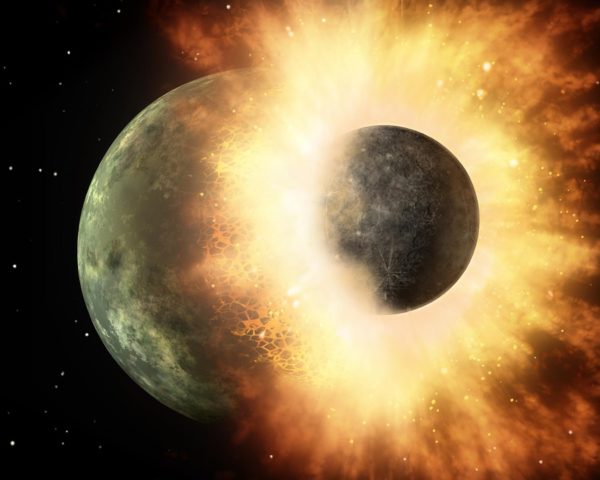
A protoplanet slammed into the Earth about 4.5 billion years ago, knocking loose a chunk of rock that would later become the moon. Now, scientists say that remnants of that protoplanet can still be found, lodged deep inside Earth, Science Magazine reported.
If remains of the protoplanet, known as Theia, did stick around after the impact, that may explain why two continent-size blobs of hot rock now lie in the Earth’s mantle, one beneath Africa and the other under the Pacific Ocean. These massive blobs would stand about 100 times taller than Mount Everest, were they ever hauled up to Earth’s surface, Live Science previously reported.
Theia’s impact both formed the moon and transformed Earth’s surface into a roiling magma ocean, and some scientists theorize that the blobs formed as that ocean cooled and crystalized, Science reported. Others think the blobs contain Earth rocks that somehow escaped the effects of the collision and nestled, undisturbed for millions of years, near the planet’s center.
But last week, at the Lunar and Planetary Science Conference, Qian Yuan, a doctoral student in geodynamics at Arizona State University (ASU) Tempe, presented an alternate hypothesis. He proposed that, after the moon-forming impact, dense material from Theia’s mantle descended deep beneath the Earth’s surface, accumulating into what we now know as “the blobs.” According to Yuan’s models, rocks 1.5% to 3.5% denser than Earth’s mantle would not mix into the surrounding rock. Rather, they would sink to the bottom of the mantle, near the inner core.


